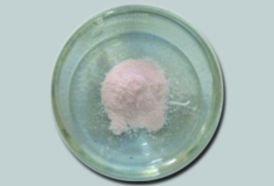Improved brain cancer remedy
January 07, 2013 | Monday | Features | By Rahul Koul Koul
Improved brain cancer remedy
In the last 20 years, temozolomide is the only drug introduced in the market for malignant brain and central nervous system (CNS) tumors. India being in the hot and humid zone IV of the International Conference on Harmonization (ICH) classification for drug stability, an improvement in the drug's hydrolytic stability for storage will be a benefit for human healthcare.
Working in this direction, the research and development team at Hyderabad-based Crystillan Research prepared more stable pharmaceutical cocrystals of the anti-cancer drug temozolomide.
Compared to the reference drug, the improved ones do not hydrolyze so readily on storage and thus have a far greater significance, as the hydrolysis of the drug by ambient water is a well known problem, as this is the only drug available for the treatment of glioblastoma multiforme (GBM) also known as malignant brain tumor. The company applied to the Biotechnology Industry Partnership Program (BIPP) under healthcare and clinical trials category in August 2011, following which they were invited for technical discussions in September and October 2011. The project received the funds under BIPP program on matching grant scheme for a period of one year at a total cost of ₹110 lakh.
The improved physicochemical properties of temozolomide cocrystals were recently published in Chemistry, an Asian Journal (2012, pp. 2274-2285). Henceforth, the company decided to carry out preclinical trials to assess the activity of temozolomide cocrystals in cancer cell lines and inhibition of tumor growth in mice. Besides Crystillan Research, there are other institutes involved in this interdisciplinary project namely Life Science Incubator at IKP Knowledge Park and National Institution of Nutrition (NIN), Hyderabad. While the tissue culture lab at IKP was involved in cell culture and inhibition activity, the NIN played key role in the animal experiments to understand the site of action of the drug cocrystals and the concentration of drug species in blood and serum.
Says Dr Ashwin Nangia, head, research and development, Crystillan Research, "The funding came at the right time for us to do cell lines and animal experiments on temozolomide cocrystals. If the animal results are positive we will decide for human trials."
"The technology is an example of taking forward a basic research breakthrough at the School of Chemistry, University of Hyderabad through its on campus Technology Business Incubator," adds Dr Nangia who is also a professor at School of Chemistry, University of Hyderabad.
Way forward
Given the fact that the patients suffering from brain tumor have a limited access to proper treatment, the project attains high importance and hope for the future. At present the project is in the stage where the cell lines IC50 data have been analyzed, and will soon carry out animal experiments for evaluating pharmacokinetic-pharmacodynamic properties. The team hopes to cover the animal trials in the next few months positively before March 2013.
Dr Nangia concludes by saying, "Biotech and pharma are high risk areas and success rate can be low. So PPP is the best model wherein the research and development cost is shared and the rewards and profit are distributed on an agreed ratio of royalty shared between the government and industry."










